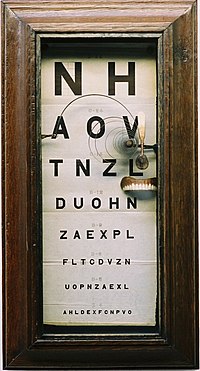Assemblage is an artistic form or medium usually created on a defined substrate that consists of three-dimensional elements projecting out of or from the substrate. It is similar to collage, a two-dimensional medium. It is part of the visual arts and it typically uses found objects, but is not limited to these materials.[1][2]

The origin of the art form dates to the cubist constructions of Pablo Picasso c. 1912–1914.[3] The origin of the word (in its artistic sense) can be traced back to the early 1950s, when Jean Dubuffet created a series of collages of butterfly wings, which he titled assemblages d'empreintes. However, Marcel Duchamp, Pablo Picasso and others had been working with found objects for many years prior to Dubuffet. Russian artist Vladimir Tatlin created his "counter-reliefs" in the mid 1910s. Alongside Tatlin, the earliest woman artist to try her hand at assemblage was Elsa von Freytag-Loringhoven, the Dada Baroness. In Paris in the 1920s Alexander Calder, Jose De Creeft, Picasso and others began making fully 3-dimensional works from metal scraps, found metal objects and wire. In the U.S., one of the earliest and most prolific assemblage artists was Louise Nevelson, who began creating her sculptures from found pieces of wood in the late 1930s.
In the 1950s and 60s assemblage started to become more widely known and used. Artists like Robert Rauschenberg and Jasper Johns started using scrappy materials and objects to make anti-aesthetic art sculptures, a big part of the ideas that make assemblage what it is.[4]
The painter Armando Reverón is one of the first to use this technique when using disposable materials such as bamboo, wires, or kraft paper. In the thirties he made a skeleton with wings of mucilage, adopting this style years before other artists. Later, Reverón made instruments and set pieces such as a telephone, a sofa, a sewing machine, a piano and even music books with their scores.
In 1961, the exhibition "The Art of Assemblage" was featured at the New York Museum of Modern Art. The exhibition showcased the work of early 20th-century European artists such as Braque, Dubuffet, Marcel Duchamp, Picasso, and Kurt Schwitters alongside Americans Man Ray, Joseph Cornell, Robert Mallary and Robert Rauschenberg, and also included less well known American West Coast assemblage artists such as George Herms, Bruce Conner and Edward Kienholz. William C Seitz, the curator of the exhibition, described assemblages as being made up of preformed natural or manufactured materials, objects, or fragments not intended as art materials.[5][6]